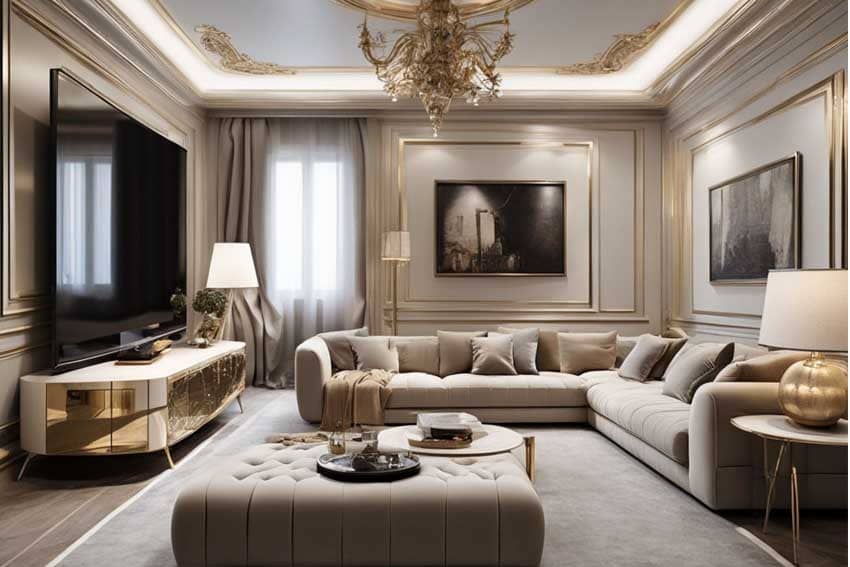In the contemporary landscape of interior design, the blend of traditional and modern elements creates a dialogue between form, function, and aesthetics. Traditional sofa styles, such as the Chesterfield, the Chippendale, and the Camelback, have emerged as pivotal pieces in modern interiors, proving that classical designs can transcend their eras to offer timeless elegance and unexpected versatility in today’s diverse living spaces.
The Timeless Appeal of Traditional Sofas in Modern Spaces
Traditional sofas are characterized by their intricate craftsmanship, detailed woodwork, and luxurious fabrics. These pieces bring a sense of history and sophistication to modern interiors, serving as focal points that blend seamlessly with minimalist, contemporary, or eclectic decor. The allure lies in their ability to introduce warmth and character into a space that might otherwise appear stark or sterile.
One of the most iconic styles, the Chesterfield sofa, is renowned for its deep button tufting, high rolled arms, and equal back and arm height. Originally designed in the 18th century, this style has evolved from dark, rich leathers to now include plush velvets and a wide spectrum of fabrics that align with modern color palettes and textures. Placing a Chesterfield in a contemporary setting adds a luxurious touch while fostering an inviting atmosphere.
Similarly, the Chippendale sofa, with its intricate wooden frame and classic lines, can serve as a striking contrast to the clean lines typical of modern design. The detailed legs and typically dark wood of Chippendale sofas draw the eye, making them not only a piece of furniture but a piece of art. Integrating such a sofa into a modern design scheme can anchor the space, providing a historical counterpoint that enhances both the visual and tactile experience of the room.
Integrating Sophistication with Camelback Sofas
The Camelback sofa, with its arched back that descends smoothly into the arms, is another traditional design that finds relevance in modern settings. Its elegant silhouette can elevate any room, harmonizing with both bold and subdued design elements. When upholstered in contemporary fabrics, the Camelback sofa bridges the gap between old and new, bringing a refined yet cozy feel to modern interiors.
Versatility of Traditional Sofas in Contemporary Layouts
The versatility of traditional sofas extends beyond their aesthetic appeal—they also offer functional benefits. In open-plan spaces, these sofas can define areas without disrupting the flow of the space. Their robust forms and detailed designs provide visual anchors that delineate different living areas within a larger room. This is particularly effective in loft-style apartments or homes where division of space is achieved without walls.
Traditional sofas also adapt well to the modern need for flexibility in furniture arrangements. Many contemporary homes feature modular or reconfigurable pieces that can be move or adjusted as needed. A traditional sofa can serve as a stable centerpiece around which other, more flexible pieces can be arrange. This creates a dynamic living space that can be tailore to changing needs and preferences.
The Role of Fabric and Color in Modernizing Traditional Sofas
The choice of fabric and color plays a crucial role in integrating traditional sofas into modern interiors. While classic leather and velvet are perennial favorites, contemporary trends include using brighter, lighter fabrics that reflect natural light and make a space feel more open and airy. Textural contrasts, such as combining a traditional sofa with modern metallic or glass elements, can also enhance the interplay between old and new.
Conclusion
The incorporation of traditional sofa styles into modern interior designs offers a rich layer of depth and sophistication that is both visually appealing and functionally practical. By respecting the craftsmanship and historical significance of these pieces, designers can create spaces that feel both grounded and expansive, timeless yet modern.


